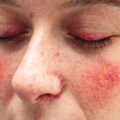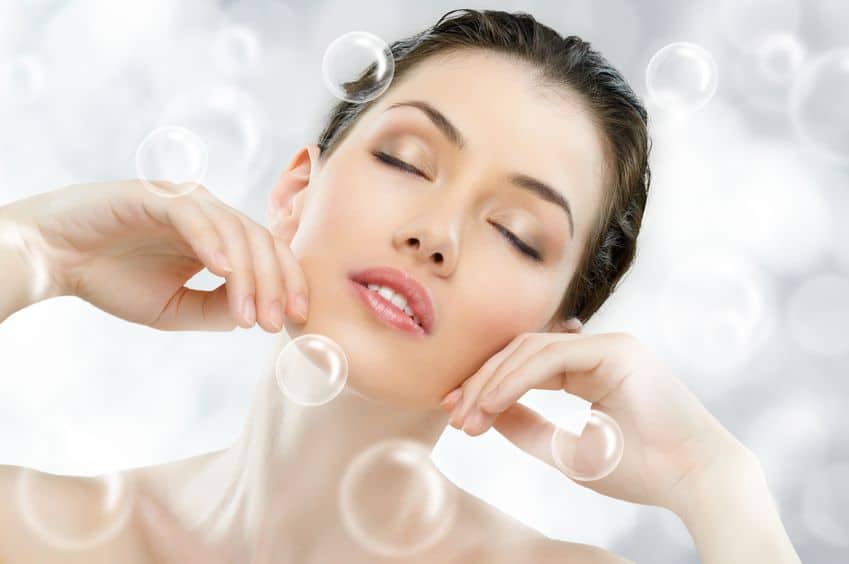
The dermal issues of those with combination skin are often dismissed as “not too serious” by others since it assumed that they don’t get the worst of either dry or oily skin. Only if these folks knew the truth about combination skin! Of all skin types, this is the one that has the most “diva-esque” behavior. Yes, you read it right; the needs of combination skin change every few millimeters.
There are dry flaking spots that inevitably get itchy and develop heightened sensitivity and then there are bits that seem like they were soaked in a vat of oil. The most sadistic part of this story is that you get to experience it all at once!
So, it is no wonder that combination skin is among the most expensive skin types to maintain all thanks to the varying products required to handle a single job. But if you have a good skincare routine in place, you won’t have to use a dozen products as you go through your day, and yet your skin will feel and look simply spectacular!
The Recommended Way Or The Middle Way!
Experts will tell you that it is best to use products meant to serve the needs of specific skin types on different parts of your face. For example, the recommended approach is that you treat the dry and oily parts of your face with products meant for dry and oily skin respectively. Just imagine how cumbersome a morning face wash can turn if you have to use two different cleansers!
Now, there are two ways in which you can forego this advice. The first works if you have mild to moderate combination skin. This means that there is a difference in the texture of your T-zone and the rest of your face but it is not overtly pronounced. In this case, you can make do with products meant for all skin types or for normal to sensitive skin that won’t exacerbate existing dryness or oiliness.
However, if there is a significant difference in how the various parts of your face feel and if you have accompanying problems such as blackheads and pimples on the T-zone and flaking dryness on your cheeks, then you will need to alternate products. Continue reading to know how to do this.
6-Step Morning Skincare Routine For Those With Combination Skin

If you have severe combination skin, chances are that the flaking on the cheeks will be overshadowed by the dripping oiliness of your T-zone as you check out your visage first thing in the morning. In fact, the flaking may not seem so bad because all through the night, your skin secretes sebum, which takes care of the dryness to some extent.
But the oiliness is bound to be another story. The sight of it is what propels people into action and towards the first harsh cleanser they can get their hands on. If that has been your response, here is a wakeup call – You are worsening both the oiliness and the dryness with this approach. Instead, this is what you need to do:
1. Pre cleansing
This is a step which takes about 10 minutes, and you will have to do this the first thing after you get up, but only on alternate days. Mix chickpea flour and matcha and if possible either licorice root powder or some pomegranate peel powder in 2:1:1 proportion. If you cannot find chickpea (garbanzo bean) flour, go with mung bean flour. Matcha is expensive, so if you want to lower the cost, grind green tea leaves to the smallest particle size possible in your coffee mill or you can use spirulina/chlorella powder instead of it.
Store, this dry mixture in an airtight container in a cool dry place. If you don’t introduce moisture into the container, the powders will stay good for 2 months at the least. To use, take a teaspoon of the mixture and make a paste using water or any hydrosol or some orange juice (homemade, without sugar) if you have it handy.
You want a smooth paste, so mix the liquid and the powders well. Once ready, apply it on the t-zone in a medium thick layer. Let it stay on the area for about 10 minutes. You don’t have to wash your face before this treatment. In fact, this can very well be the first thing you put on your face.
After 10 minutes, wet the now drying paste on the t-zone and spread it all over your face, including on your cheeks. If you have some left over from earlier, use this as well. Remember to use upward or circular strokes when using this home-made cleanser. Wash you face clean using either tea infused or regular, room temperature water. Your face will seem cleaner and refreshed after this treatment and above all your cheeks won’t feel dry.
2. Cleansing and exfoliating
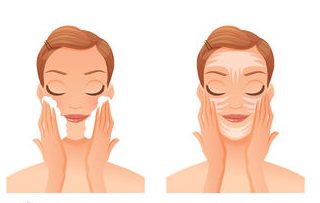
Here is the first bit of good news for you, once you apply the home made face cleanser, you won’t need additional cleansing unless you have an extremely oily T-zone. Even then, simply use a cleanser and exfoliator meant for normal or sensitive skin as you won’t have much oil to deal with after the flour based cleanser.
Jojoba beads are among the gentles exfoliating medium and can be safely used. So, pick a cleanser that contains these. Use this mild cleanser, which should be meant for normal or all skin types everyday, even when you are doing the pre-cleanse.
3. Toning
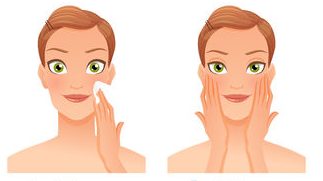
Because the pre-cleanse, actual cleansing and exfoliation will have already taken care of the hyper sebum secretion, you won’t need a drying toner. Any formulation that is meant for normal or even sensitive skin will work well. Alternatively, you can try gentle floral waters like rose, lavender, vetiver or neroli hydrosol. Apply the toner of your choice using cotton wool soaked in the liquid, moving the cotton ball in upward strokes to saturate the dermal cells with the hydrating and nourishing formulation.
4. Serum and moisturizer care

While your skin is still damp from the use of the toner, go ahead and apply a serum or moisturizer on your face, neck and décolletage. This will lock the moisture close to the dermal layers, making it readily available to the cells. Now, you can pick a serum that contains oil-control ingredients such as retinol, fruit enzymes, alpha hydroxy acids or vitamin C and ferulic acid, which will have an exfoliating effect on the dry areas of your skin and control sebum secretion.
If you want to use an antioxidant serum or a moisturizer, go for a formulation that is gel based or is a very light emulsion. The idea is to not cover you’re already oily T-zone in more oil. At the same time you don’t want your dry cheeks to get drier.
So, do not use a serum/lotion or any product that contains salicylic acid or benzoyl peroxide, unless you are battling acne in the T-zone. In this case, restrict the use of such a product only to the oily and pimple prone areas. Do not apply it all over your face and certainly not on the cheeks because it will simply increase the dryness.
5. Extra TLC
With the serum and the gel based moisturizer, you will take care of the hyper oily T-zone but you will need to go a step further to indulge the dry skin on your cheeks. So, go ahead and use a rich skin cream, preferably one that contains soothing carrier oils and plant butters such as cocoa butter, jojoba, butter, shea butter, argan oil, macadamia nut oil and essential oils, on the cheeks.
Be careful to restrict the application of this product only to your cheeks, neck and décolletage, steering clear of the T-zone and even the under eye area. For the later, you can use a gel based under eye cream to tackle specific problems in this part. But this will have to be used before the serum and the skin cream.
6. Protection
It does not matter what skin type you have, nobody and I mean nobody without exception can do without sunscreen. A gel or spray on sunscreen will be your best bet because a lotion or cream will prove to be too oily for your t-zone. Just make sure that you go with SPF-30 and over and reapply every 2-3 hours if you intend to step outside.
Combination Skin Midday Routine

Once again, the oily T-zone will prove to be the undoing of your perfectly matte and shine free makeup. By noon, your cheeks will hold up fine but your nose, forehead and chin will take on the look of a fritter. Look at the bright side here – at least you don’t have to deal with oiliness all over your face.
That said, the excess oil is the first issue that you need to handle. So, get the blotting paper out and get done with it. Press it against the oily parts so that the paper can soak up the excess oil. Next, soak some cotton wool in your replenishing toner or a hydrosol and dab your face with it. Do not wipe as this will take off the coverage product you have used.
The aim is to get rid of any dirt and grime that your skin may have picked up. Wet your skin with the fluid of your choice and allow it to hydrate those dermal cells for about a minute then dab away at the wetness with some tissue paper. As a final measure to go back to your shine free and fresh makeup look, dust some translucent powder (preferably mineral powder) over the T-zone and press some light lotion or moisturizer on your cheeks, neck and décolletage.
Remember, there is no massage involved in the application of the moisturizer. Rub a pure but light plant butter (kokum/mango) or a moisturizing lotion in between the palms of your hands and press your palms against your cheeks; that is all there is to it.
4 Step Night Routine For People With Combination Skin
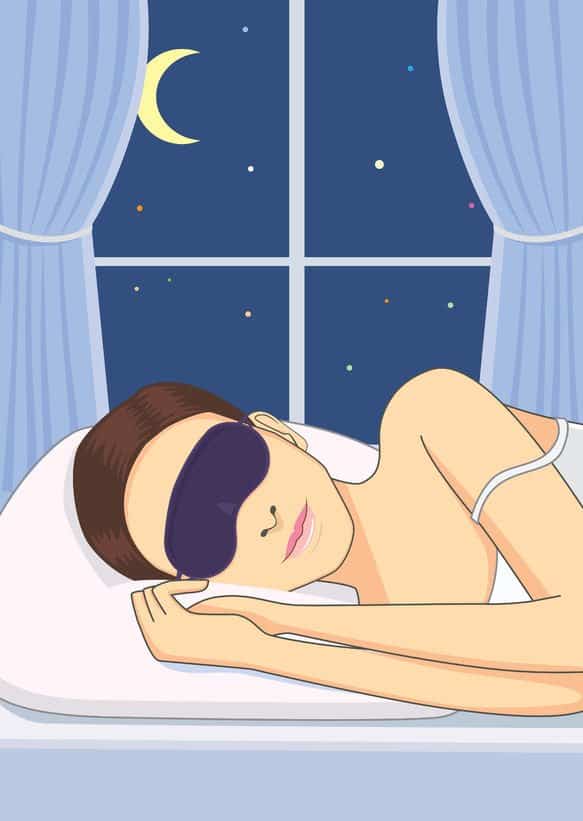
While in the morning, your only dermal issue was the oil on your face, by the end of the day, you will also have to deal with grime, dead cells and clogged pores, at least in the T-zone. So, a simple wash with any odd cleanser is not going to cut it. What your skin needs right before bed is thorough and deep cleansing. This way, all the products that you intend to use after cleansing will work as they should.
1. Two step cleansing
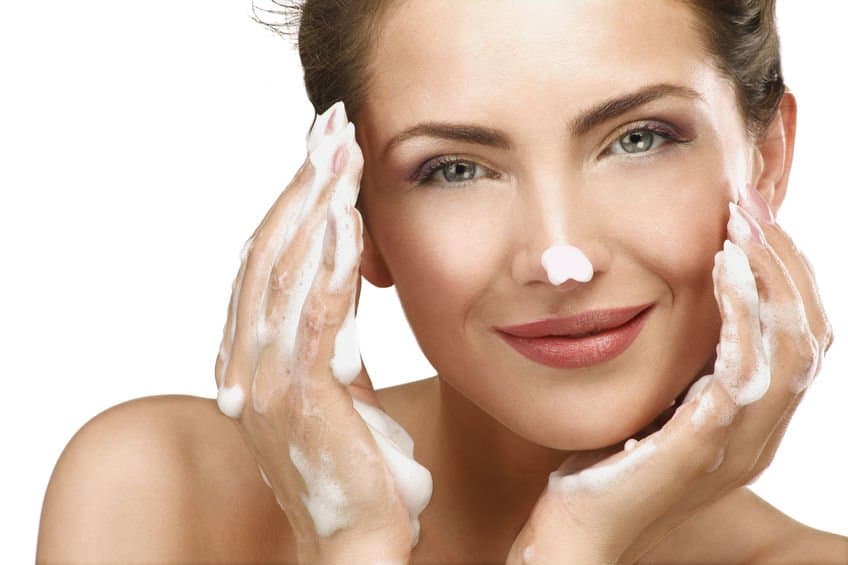
Let me clarify one thing, soap and water seldom do a good job of removing oil, unless you are talking about multiple applications of a harsh detergent and significant scrubbing, both of which are out when it comes to your skin. This leaves you with one option, which also happens to be the best and most effective. Say hello to cleansing your skin with oil!
Did the word “oil” in that phrase make you do a double take? Don’t be surprised or alarmed, oil cleansing is all the rage these days and with good reason. It works on all skin types, tricks the skin into believing that it is safe hence no need to over-secrete sebum and above all keeps the skin’s natural protective barrier healthy. Now, what else could you possibly want from a cleansing mechanism?
To top it all, you also get to take off your makeup, dissolve the grime plugging the pores and cleanse your face all at once by using the right blend of oils. To start, mix a non-comedogenic carrier oil (safflower, hempseed, rosehipseed, sunflower, black cumin seed) with castor oil in 3:1 ratio. Add 2 drops each of lavender and tea tree oil for every tablespoon of the carrier oil mixture and store this blend in a dark colored glass bottle.
To use, apply liberally all over your face; no need to wash or remove your makeup before application. Use circular moves to rub the oil in; wait for 3-4 minutes and wipe the oil off of your skin using a face cloth soaked in warm water or tea. Repeat the process one more time and your skin will be free of makeup, excess sebum as well as dirt.
Now, for the next step, if you have a very oily T-zone, this is the time to fish out the salicylic acid/benzoyl peroxide face wash. Use it only on the oily area of the face, sparing your cheeks the harsh and drying treatment. Pat your skin dry and reach for your toner.
2. Toning
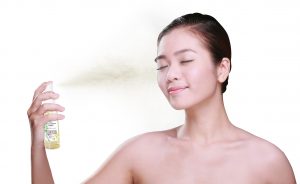
You can use the same product as you did in the morning, be it a hydrosol or a replenishing toner. Ideally, it is best to go for a formulation that contains antioxidant rich botanicals, which will speed up the natural healing process of your skin. If you have only used oil cleansing, you can opt for a formulation that contains active fruits acids or enzymes and use it all over your face, including on the cheeks
3. Serum
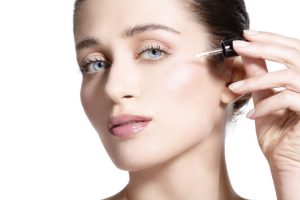
If you have used a vitamin C serum in the morning, for night use, choose a product that contains hyaluronic acid, licorice root extract, niacinamide, retinoids, copper peptide along with other herbal ingredients. This way, you give your skin more nutrition, without going overboard with a single ingredient. As it is, you should not be mixing copper peptide and vitamin C or for that matter, vitamin C and a retinoid. While the first two annul the efficacy of each other, the second combination will cause significant dryness and peeling. As with the day-time serum, this formulation too should either be oil free or a non-greasy emulsion.
4. Moisturizer
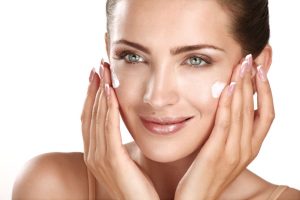
Finish your night-time skincare routine with a soothing and hydrating moisturizer. Pure argan oil or any blend made with it works very well on combination skin because the oil provides intense hydration without blocking the pores. If you are concerned about acne, do not use the moisturizing night cream/oil on the T-zone.
Weekly Routine
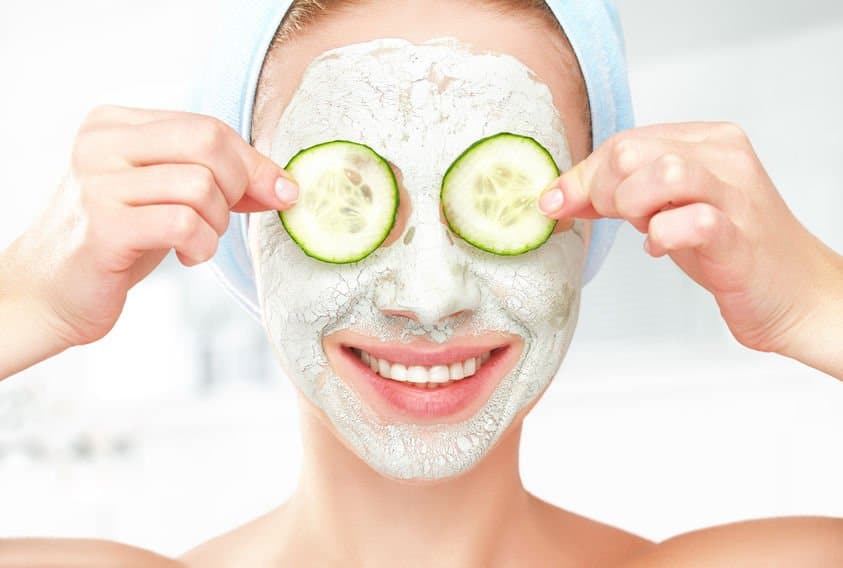
To keep your T-zone shine free and the rest of your face flaking free, you will need to opt for three mask treatments a week. (POST) Start with facial steaming and a clay mask that will pull out the impurities from the pores while neutralizing environmental and metabolic toxins. Clay/mud/ash masks have the unique ability to ramp up the blood circulation. More blood means faster removal of impurities and increased hydration and nourishment to the dermal cells, which is exactly what you skin needs.
If the clay mask is used on Sunday, give your skin a break for two days and use a hydrating antioxidant sheet mask on your face on the third day. Do not steam your skin before the application of this product. However, to show your cheeks just how much you care for them, end the day with an all-night oil mask that should only be used on the dry areas.
Finally, before the weekend, get the glow you will need to get the revelries going with a peel off mask that contains a fruit acid/enzyme. Again, no steaming required before this one.
Adjusting For weather
Now, for combination skin both summers and winters spell trouble, just for different parts of the face. While your cheeks and temples will take on a sallow and dehydrated look as temperatures soar, the real issue will be with the T-zone, which can suddenly turn into an acne ravaged battle ground. With sebum secretion at its peak, sweat adding to the issue and dust and pollen all around you, acne attacks will be at an all-time high, unless you prepare your skin for summer.
A preemptive move would be to start using a salicylic acid cleanser twice a day. This would mean, you will need to cleanse your face using this formulation even after the pre-cleansing routine. But, use it only on the T-zone. Also, use a pore clarifying clay mask twice a week instead of just once.
In winter, your T-zone will look fine with sebum production curtailed but your dry cheeks will turn into an arid zone, so you may experience significant flaking. To counter this, keep a super hydrating moisturizer stick handy. Dab the creamy, occlusive formulation on your cheeks every 3-4 hours to ensure that the frigid temperatures do not impact the dwindling levels of hydration in your dermal layers. Also, use hydrating face masks, preferably a sheet mask twice a week. Remember to go for a round of facial steaming once a week, right before the mask treatment.
Adjusting For Hormones
For your T-zone, the most worrying time of the month will be a week before the start of your period till the fourth day of menstruation. This is when sebum secretion peaks in response to increased testosterone in the system and your pores blow up to the size of lunar craters, inviting more dirt and grime to clog them. Cystic acne is bound to come on the heels of these issues. So, what you need to do to prevent the inevitable bout of pimples is keep pore size and sebum secretion in control and your skin clean of dirt and dead cells.
Fortunately, you can achieve this with twice-a-day use of a salicylic acid cleanser and twice a week application of a purifying mud/clay mask. Do not use your hydrating mask in these 10 days. Instead, go for a peel off mask that will get rid of the dead cells. If the latter is not a preferred skincare product, make sure that you exfoliate your skin everyday through this period.
As far as dermal dryness goes, you will have a problem in the week that follows your period. You skin will be at its driest, so you can expect your cheeks to get flaky and possibly itchy. Deal with this the same way you would with winter dryness. Carry a super emollient and occlusive moisturizer stick along and apply it on your cheeks every 3-4 hours. Also, exfoliate your cheeks everyday through this period.
So, go ahead and take care of your combination skin like a pro!


